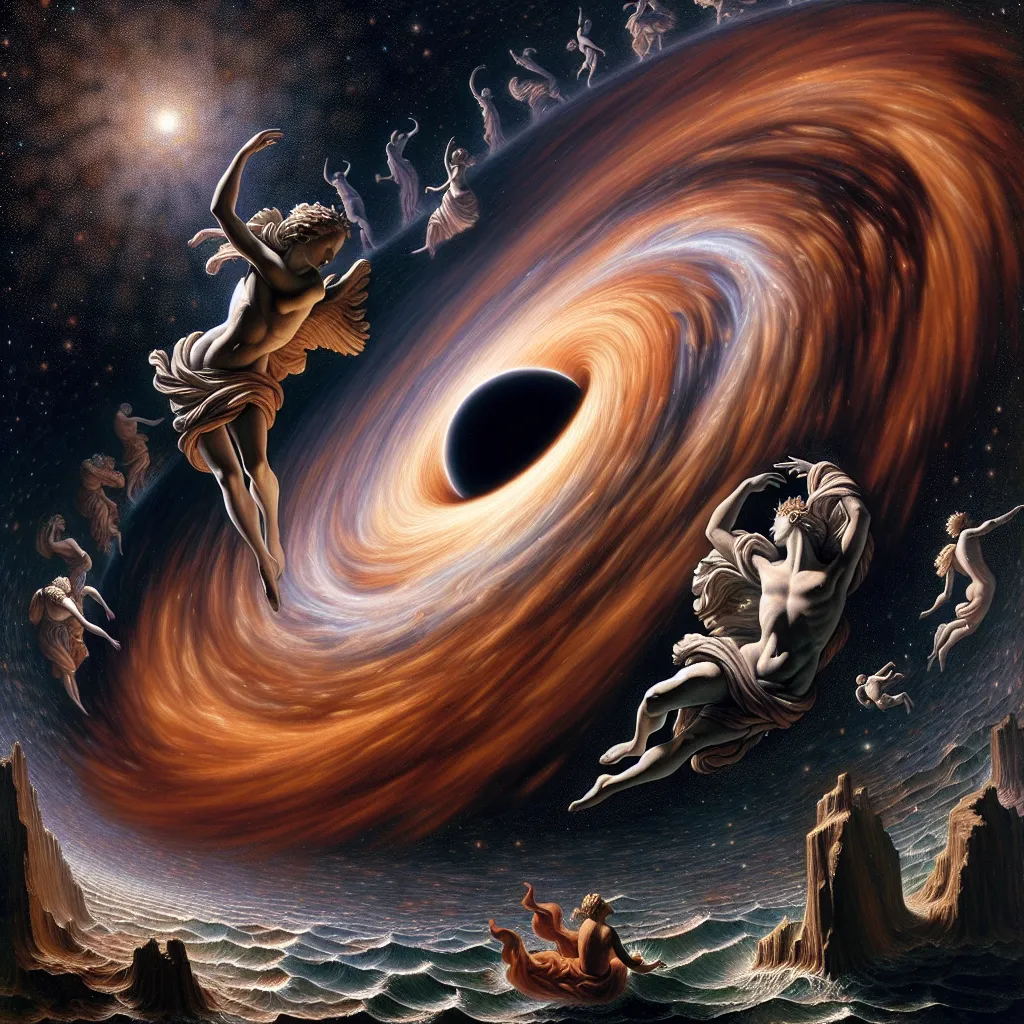Unveiling the Mysteries: Black Holes and Their Cosmic Ballet
 Quantum Cyber Solutions
Quantum Cyber Solutions
Published on
Thursday, August 17, 2023
Unveiling the Mysteries: Black Holes and Their Cosmic Ballet
================================================================
Authors

Name
Elon Tusk 😄
Twitter
Unveiling the Mysteries: Black Holes and Their Cosmic Ballet
Welcome to a journey among the stars and into the depths of space where cosmic titans—black holes—reign supreme! In this post, we'll dive into the latest discoveries about black holes and explore how these enigmatic entities play a pivotal role in shaping the universe. Hold on tight, as we navigate gravitational waves, accretion disks, and the awe-inspiring phenomena that black holes orchestrate.
The Dance of the Giants: Understanding Black Holes
Black holes are regions in space where gravitational forces are so intense that nothing, not even light, can escape. Formed from the remnants of massive stars after they exhaust their nuclear fuel, black holes are enigmatic and complex entities. Their role in the universe extends far beyond being cosmic vacuum cleaners; they are the choreographers of the cosmic ballet.
Hawking's Revelation: The Radiation That Astonished Physicists
One of the most thrilling developments in black hole physics was Stephen Hawking's prediction of Hawking radiation. Contrary to the notion that nothing can escape a black hole, Hawking proposed that black holes emit radiation due to quantum effects near the event horizon. This groundbreaking revelation opened the door to a deeper understanding of black hole thermodynamics and quantum gravity.
Galactic Architects: Black Holes and Galaxy Formation
At the heart of nearly every massive galaxy, including our own Milky Way, lies a supermassive black hole. These colossal giants, with masses ranging from millions to billions of times that of our sun, are far from mere passive observers of galactic evolution. They are, in fact, galactic architects.
Feedback Mechanisms: The Cosmic Sculptors
Supermassive black holes influence their host galaxies through feedback mechanisms. As material falls into the black hole, it forms an accretion disk, heating up and emitting radiation and powerful jets. These outflows can regulate star formation, shape the interstellar medium, and even affect the distribution of dark matter. In essence, black holes sculpt the very structure of galaxies.
The Gravitational Symphony: Merging Black Holes and Gravitational Waves
One of the most sensational discoveries in recent astrophysics was the detection of gravitational waves by the LIGO and Virgo collaborations. These ripples in spacetime, predicted by Einstein's General Theory of Relativity, are often the result of merging black holes. Each collision creates a thunderous symphony of gravitational waves that we can now detect here on Earth.
GW150914: The Birth of a New Era
The first direct detection of gravitational waves, known as GW150914, came from the merger of two stellar-mass black holes. This monumental event opened a new observational window to the universe, allowing us to study cosmic events that were previously undetectable. Since then, numerous black hole mergers have been detected, each telling a unique story about the dynamic universe.
Pushing the Boundaries: Technological Advances in Black Hole Research
The quest to understand black holes is driving technological innovation. Instruments like the Event Horizon Telescope (EHT) have provided an unprecedented view of black hole horizons. EHT's image of the supermassive black hole in galaxy M87's center was a milestone, showing a glowing ring of accreting material around the shadow of the black hole.
Future Frontiers: Next-Generation Observatories
Looking ahead, next-generation observatories, such as the James Webb Space Telescope (JWST) and the Laser Interferometer Space Antenna (LISA), promise to further unravel black hole mysteries. JWST will explore the environment around black holes with unmatched infrared sensitivity, while LISA will detect gravitational waves from space, opening a new era of multi-messenger astronomy.
Conclusion: Embracing the Enigma
As we continue to explore the cosmos, black holes remain one of the most captivating mysteries. Their influence stretches across the universe, affecting everything from the formation of galaxies to the fabric of spacetime itself. With each technological leap and new discovery, we inch closer to understanding the profound role these cosmic titans play in the grand tapestry of the universe. So, keep your eyes on the stars and your curiosity boundless—the dance of the giants continues!
Discuss on Twitter • View on GitHub
Tags
Previous Article
The Quantum Reality of Time: Unraveling the Fabric of Our Perception
Next Article
The Vacuum Balloon: Exploring the Science and Feasibility of Lifting Payloads to Space
Subscribe to my newsletter
Read articles from Quantum Cyber Solutions directly inside your inbox. Subscribe to the newsletter, and don't miss out.
Written by
